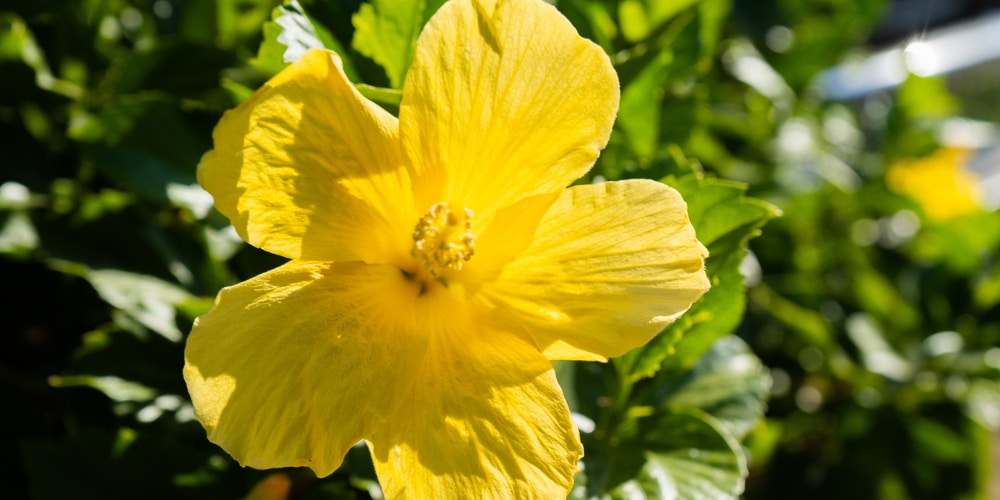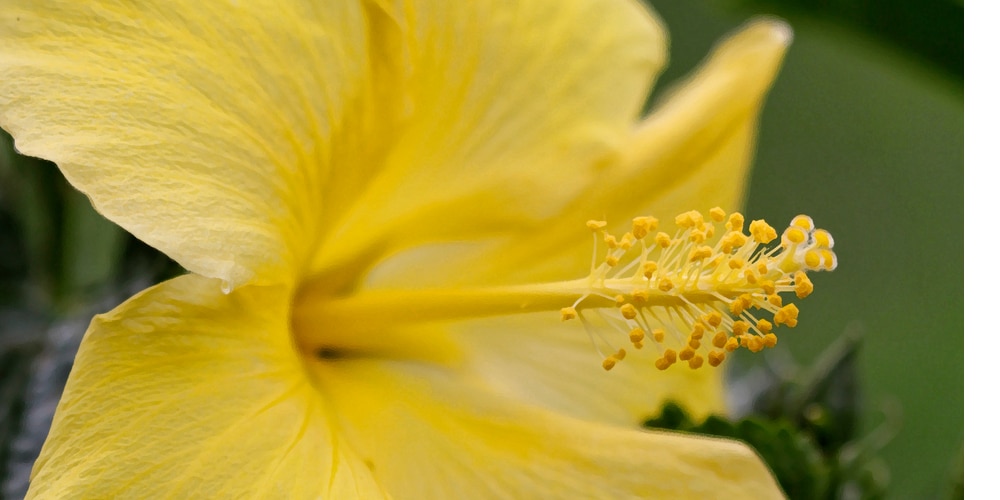The Fort Myers hibiscus is a colorful tropical flower that blooms big, bright flowers all summer long. In USDA plant hardiness zones 10 and 11, the Fort Myers hibiscus grows best when planted directly into the soil or a very large pot.
This sun-loving plant needs at least six hours of sunlight each day to bloom properly, so place your Fort Myers hibiscus where it will get plenty of sun. Follow this guide for growing happy Fort Myers hibiscus plants inside or outside your home.
What is a Fort Myers Hibiscus?

Fort Myers hibiscuses grow best when planted in full sunlight, as they are native to tropical climates. They are part of the Malvaceae family of plants, consisting of approximately 200 genus and over 4000 plants.
These plants are evergreens with large bright yellow flowers which measure approximately 6 to 7 inches across. They grow to a height of between 6 and 8 feet.
How to Care for a Fort Myers Hibiscus

These plants are relatively easy to care for both indoors and outside. When grown outdoors in colder regions such as North America and Europe, they must be treated as annuals. If you keep your plant indoors, it will continue to grow and flower year after year. Here are some tips to help you grow and care for a healthy Fort Myers Hibiscus:
Sunlight needs
Hibiscuses require six to eight hours of direct sunlight each day without exception. If they receive less than six hours of sun, they may begin to lose their leaves and fail to flower. If you plan on moving your hibiscus outside for the summer, do so during the morning hours when it is cooler and less likely to wilt from exposure to high temperatures. This will help your plant become acclimatized to the sun and temperature.
Watering
Hibiscuses should be watered at least one time per week with room temperature water until it begins to run out of the drainage holes in its pot. Always allow the soil around your hibiscus to dry between watering as well. Watering more frequently than once per week may lead to root rot if your plant’s soil becomes soggy.
Humidity
These plants thrive in humid locations with humidity of at least 50%.
Soil
Fort Myers Hibiscuses require neutral soil with a pH between 7 and 8. If you find that your soil is too acidic, mix in some lime or powdered eggshells to bring the soil into balance. These plants require loose, well-draining soil. You can add some organic matter to improve the health of the earth.
Fertilization
Fort Myers Hibiscuses require fertilizer throughout summer when they are actively growing and producing flowers. Use a water-soluble 10-10-10 (or similarly balanced) fertilizer at least once per month while your plant is in full growth mode for best results.
Pruning
Pruning hibiscuses can be done at any time of the year, though it is usually best to prune your hibiscus after flowering has finished.
You can prune off individual branches if you wish to control the size and shape of your hibiscus or remove entire lower branches if your hibiscus begins looking too large for its pot. Remove all dead leaves and stems as well before repotting or moving your hibiscus indoors for winter.
If your Fort Myers Hibiscus has buds that aren’t opening, you’ll need to fine tune one of the listed issues above.
Conclusion
Fort Myers Hibiscus are beautiful tropical plants that are evergreen and produce flowers year-round. They are relatively easy to care for in the right climate.
Ensure your plant has plenty of sunlight, water, food, and room in its pot before replanting or repotting. Prune your hibiscus back every so often to shape them and remove old or diseased foliage. Most importantly, remember that hibiscuses are tropical plants and shouldn’t be left outside in the winter in colder climates, especially if frost is expected.